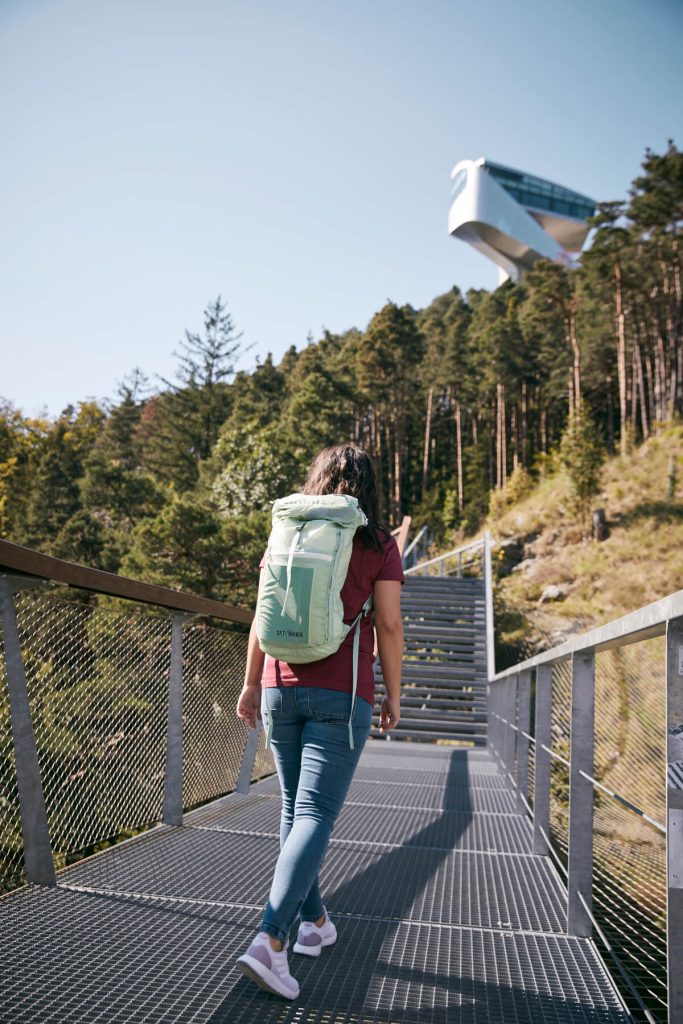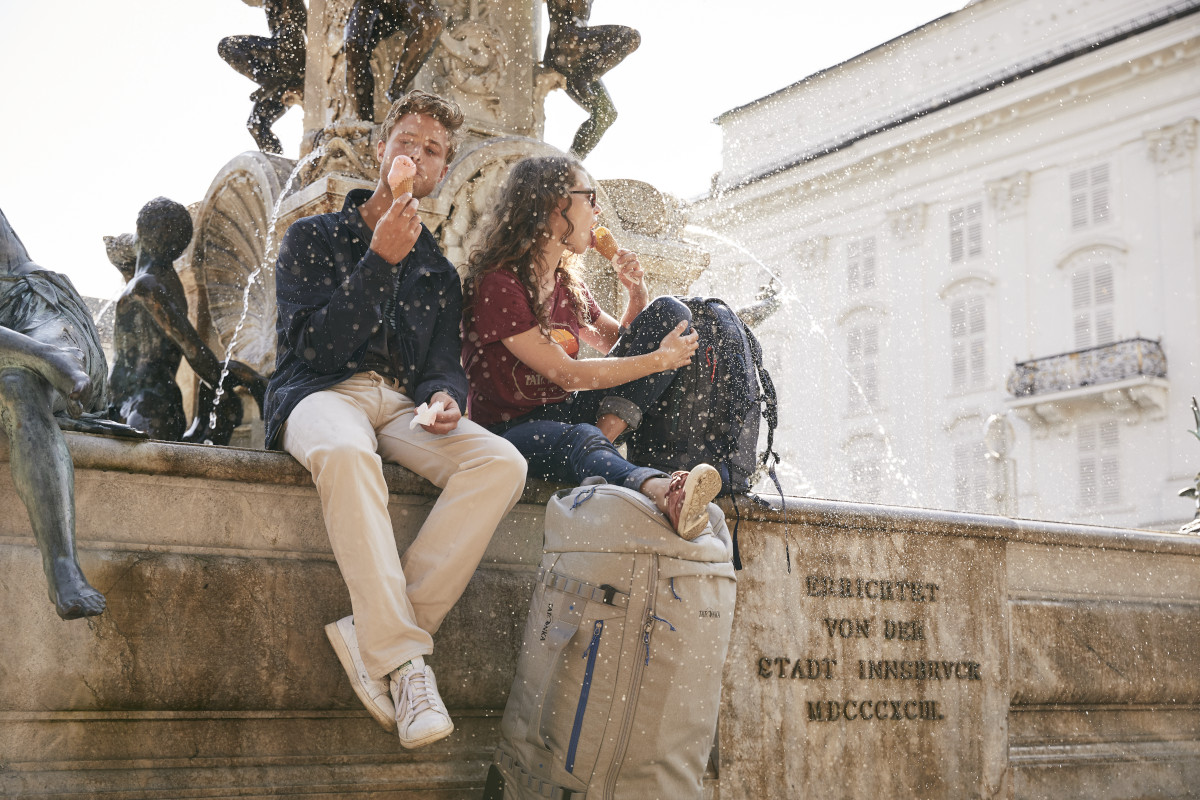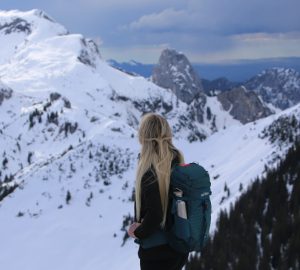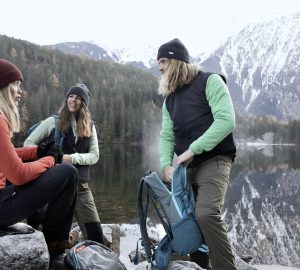Innsbruck is the ideal base for exploring the breathtaking mountain scenery that surrounds the capital of Tyrol. There are few cities from which you can so easily reach the remote, wild mountain nature and enjoy the benefits of a big city in the evening.
With many cultural attractions, not to mention great Tyrolean cuisine, Innsbruck certainly has a lot to offer to other city travelers – but most people come to connect culture with outdoor activities. Hikes are available from Innsbruck for every level. With the Nordkettenbahn, truly anyone can enjoy the majestic views of Innsbruck from over 2,000 meters. The adrenaline faction can choose from a plethora of mountain bike trails and climbing routes, and in winter the entire region transforms into a skier’s paradise with a seemingly endless number of groomed slopes.
We divide this city guide into two sections: cultural sights and outdoor sights. We recommend a good mix of the two sections to fully enjoy the unique Innsbruck feeling.
Tip: A good investment is the InnsbruckCard for museum visits and train rides (e.g. to the Nordkette). Valid for 24 to 72 hours, the card is priced at €49 to €66 per adult (children ages 6 to 15 pay half) and offers free admission to pretty much all the attractions you can visit, including public transportation in Innsbruck and the Nordkettenbahn (which alone costs €40).

Attractive design, textile haptics, comfortable handling and PFC-free finish – these are four unbeatable arguments for Tatonka’s new line of travel bags – and not just for your Innsbruck trip.
The special feature: The foldable travel bags and trolleys can be stored flat in their own lid pocket when not needed.
Innsbruck’s cultural sights
1. Goldenes Dachl (Golden Roof)
The Goldenes Dachl (Golden Roof) is a late Gothic oriel on the south front of the imperial government building and is Innsbruck’s most famous sight. Its special feature is the roof covered with 2,657 gilded copper shingles, which shines in golden splendor especially on sunny afternoons. The Golden Roof was a status symbol for Emperor Maximilian, who commissioned it about 500 years ago. Anyone who can cover their roofs in gold must have been somebody. In the adjoining museum you can learn a lot about the Golden Roof and the time of Emperor Maximilian I.
Diagonally opposite you will find the Helblinghaus with its lush baroque stucco facade of flower tendrils, fruits, shells and putti. Originally a Gothic burgher’s house from the 15th century, it was lavishly renovated in the 18th century and has been preserved ever since.

2. Innsbruck’s Old Town
Innsbruck’s Old Town, a UNESCO World Heritage Site, impresses with its dense maze of historic alleyways and very well-preserved house facades that date back to the Middle Ages. As a counterpoint, Maria-Theresien-Strasse, Innsbruck’s boulevard, flaunts imposing Baroque architecture that contrasts particularly well with the towering mountains of the Karwendel massif in the background. Here you can shop or sit in sidewalk cafes and people-watch.
The end of the street is marked by the Innsbruck Triumphal Gate, also well preserved, which commemorates the wedding of Leopold II to the Spanish princess Maria Ludovica.
3. Hofburg and Court Church
The imperial Hofburg was built as a castle complex under Emperor Maximilian I in 1500 and later expanded into a rococo palace under the reign of Maria Theresa. Tours will take you through the imperial family’s chambers, the magnificent Hall of Giants, the chapel and the heraldic tower, among other things.
A visit to the Imperial Court Church is also worthwhile. Here you will find the impressive tomb of Emperor Maximilian. It is guarded by 28 black, life-size bronze figures representing the emperor’s friends and family. The ornate sarcophagus is empty, however, as the emperor was buried in Wiener Neustadt after all.
4. Strudel café Kröll
Just because Innsbruck isn’t Vienna, luckily you don’t have to miss out on the traditional coffeehouse culture that makes Austria so unique. Innsbruck is home to a variety of lovely cafes, but the Strudel-Café Kröll in Hofburggasse is something special. Here you can choose from an unusual variety of strudel options (sweet and savory!), some with very unusual flavor combinations that are sure to be a culinary highlight of your Innsbruck trip.
5. Tyrol Panorama Museum
The Tyrol Panorama Museum is located just a short walk south of the city center and offers breathtaking views of Innsbruck and the mountains. The museum is most famous for the Innsbruck 360-degree Giant Panorama Painting, which occupies a circular room with a total canvas size of more than 1,000 square meters.
6. Bergisel Ski Jump
The Bergisel Ski Jump was designed by Iraqi architect Zaha Hadid as a usable sculpture. For that reason alone, it’s worth a detour, but the view from this elevated location over Innsbruck is also worthwhile. The ski jump is open to visitors from Wednesday to Sunday between 9am and 5pm. In the summer, show jumping takes place between 10-12 and 13-15 – this thrills not only children.

Innsbruck’s outdoor sights
7. Nordkette
The Nordkette is Innsbruck’s dominant mountain range and can be reached directly from the city center. The Hungerburg cable car takes you from the river to Hungerburg in just eight minutes. From here, the Seegrubenbahn takes you up to 1,905 meters and from there to the Hafelekar (2,256 meters). Up here, the view opens up on both sides, to the north to Austria’s largest nature park, the Karwendel Nature Park, and to the south to the city including the Stubai Valley.
Should you feel like exploring the mountains around Innsbruck in more detail (apart from this comfortable option), there are numerous hiking routes from the stations of the Nordkettenbahn for all skill levels. We have selected two tours for you that can be done even without large hiking equipment.

8. Patscherkofel
Innsbruck’s local mountain with its round top is easily accessible by public transport and a mountain railroad. Approximately 60 easy, marked trails offer enough variety without you completely exhausting yourself right away. This tour takes you through an entire forest on the Zirbenweg, with a relaxed 180 meters of elevation gain over seven kilometers. The altitude of over 2,000 meters opens up spectacular views throughout, which you can enjoy before, after and during your hike, both on the way and in cozy huts. The highest botanical garden in Austria is also located here and definitely worth a visit.
9. Goetheweg/Pfeishütte
One of the most beautiful hikes around Innsbruck leads along the Goetheweg to the Pfeishütte. From the mountain station of the Hafelekar, you first walk along the path and have plenty of time to take in the breathtaking view of the Inn Valley and the mountains opposite.
After about three kilometers, the path changes through the Mandlscharte to the north side of the Mandlspitze and gives you a view of the no less impressive Karwendel massif with its barren, rugged peaks. Up here, numerous herds of sheep graze in the summer months, and they are quite indifferent to both hikers and a continuous path – when they rest, they do so on the path, forcing hikers to take amusing detours across the meadow.
As a well-deserved resting place, the Pfeishütte beckons with excellent food in the most idyllic alpine setting. From here you have three options to get back to the valley: Either on the same way back, over the Kreuzjöchl and then with the bus from Rum back to Innsbruck or over the Arzler Scharte to the Arzler Alm, from where you get in about 40 minutes to Hungerburg and thus to the train.
10. Arzler Alm Trail
Also for the mountain bike friends among our readers we would like to recommend a small, fine round: The Arzler Alm Trail is a playful, technically challenging flow trail (S2), which you reach via three kilometers of uphill and after 200 meters of elevation gain. The trail entrance is 300 meters away from the Arzler Alm – ideal to recover from the exertions with a coffee and a piece of cake before you start the great descent.
If you don’t have your bike with you, renting a mountain bike in Innsbruck is no problem at all. There are numerous providers that you can contact either through your own research or through your hotel.







